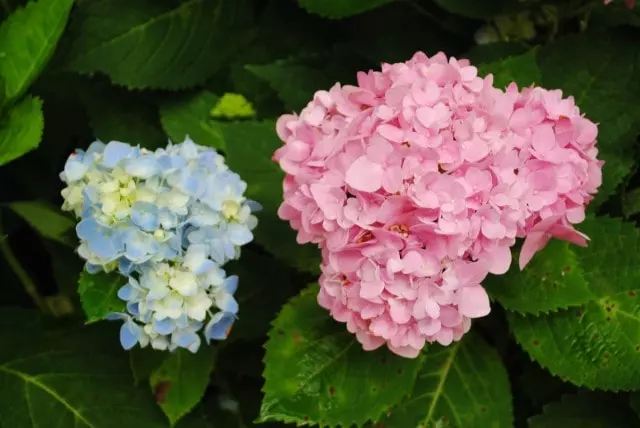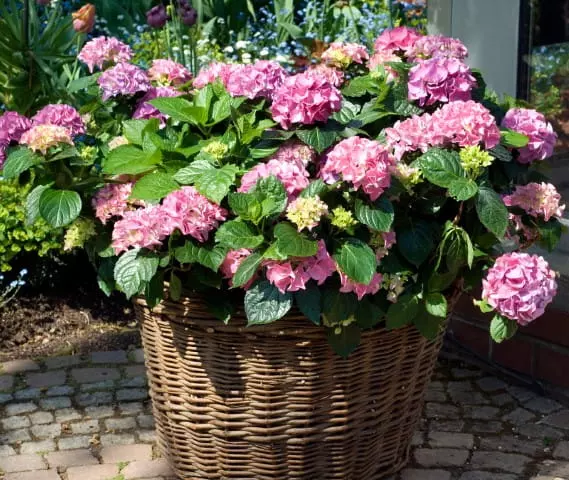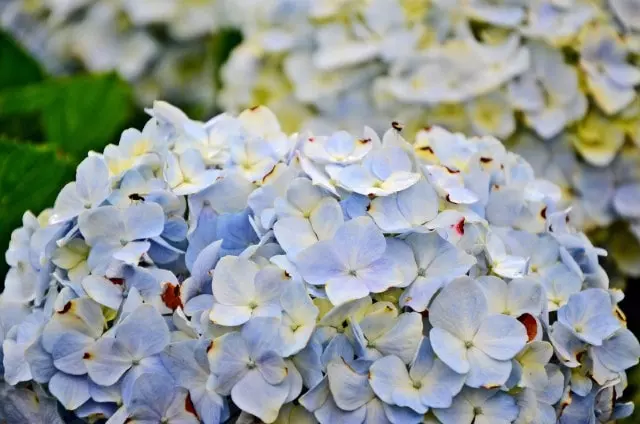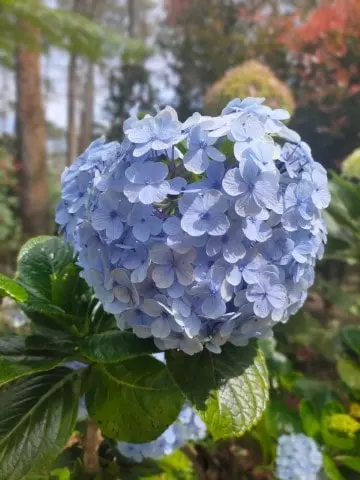Table of Contents
All About Endless Summer Hydrangea Pruning
Endless Summer Hydrangeas (Hydrangea macrophylla) are a one-of-a-kind hydrangea that takes the conventional hydrangea to new heights. They may produce their massive, dramatic flowers on both old and young wood, resulting in a long blooming season and the possibility of reblooming. Pruning and trimming hydrangeas can be slightly different depending on the hydrangea species. Usually, gardeners ask “Do Endless Summer Hydrangeas Need Pruning?” “When to Prune Endless Summer Hydrangeas?” Of course, they need it! Like any other shrub needs some pruning and trimming. However, to maintain its proper flowering throughout the year must be proper pruning done. In this article, we go over everything about pruning Endless Summer hydrangeas, when to prune Endless Summer hydrangeas and how to trim Endless Summer hydrangeas. Tips for abundant bloom all year round. Let’s start reviewing All About Endless Summer Hydrangea Pruning.
Pruning Endless Summer Hydrangeas
Pruning Endless Summer Hydrangeas. Many people ask about Endless Summer Hydrangea pruning. What is remarkable is that in particular, these Endless Summer Hydrangeas do not need to be pruned like other hydrangeas.
Endless Summer Hydrangea Pruning
How is it possible that Endless Summer Hydrangeas only need to be pruned differently from the others? Because Endless Summer Hydrangeas bloom on both old and new growth.
When you discover any dead, dying, or diseased branches, you should prune them. Instead of pruning, and removing large branches, a moderate trimming of branches older than new should be done.
Let’s see when to prune Endless Summer hydrangeas and how to do it.
Endless Summer Hydrangea Pruning
When compared to the old-growth, which is woody and the color of parchment, the fresh, young stems of “Endless Summer” have a vibrant green tint. Because new growth creates bloom buds throughout the season, you can clip a fading flowering stem back to half its length to foster new growth and flower buds.
Let’s continue reviewing the information about pruning Endless Summer hydrangeas and when to prune Endless Summer hydrangeas.

Endless Summer Hydrangeas that haven’t bloomed due to over-pruning are a regular problem.
Let’s continue reading when to prune Endless Summer hydrangeas and how to do it.
Cutting Back Endless Summer Hydrangea in Spring
How to Cut Back Hydrangeas in Spring. In the spring, trim the hedges. “Endless Summer” may appear to be a cluster of dead stems in early spring, but don’t trim it back to the ground.
You’d mistakenly chop off buds that would blossom this season since it grows on both old and new wood. Allow new growth to sprout to conceal the older stems. Wait until early summer to clip any dead tips that remain.
Cutting Back Endless Summer Hydrangea in Fall
How to Cut Back Hydrangeas in Fall. If you wish to regulate the size or form of “Endless Summer,” trim it back as soon as it finishes flowering in early October.
The dried flower heads can be trimmed off at this point, or you can leave them on the shrub for the winter and even up the remaining stems. If you cut the plant all the way to the ground, though, you’ll have to wait until the spring buds mature before you get blooms.
Endless Summer Hydrangea Care
In the following paragraphs, we will review a series of tips related to Endless Summer Hydrangea Care.
The care of Endless Summer Hydrangea is related to the type of soil, especially the pH because it is related to the color of the bloom, the hours of sun and shade, the fertilization, and the amount of water needed.
As expected, the Endless Summer Hydrangea Care may need can be a bit more demanding because it maintains a bloom all year long.
When the rainfall is less than 1 inch, water the hydrangea deeply and thoroughly once a week. During the first spring, summer, and early autumn, water newly planted hydrangeas once a week to soak the soil down to and around the roots.
To keep the soil wet and weeds at bay, apply a 2- to 3-inch layer of organic mulch to the ground surrounding the Hydrangea macrophylla. Spread the mulch around the root region to cover it completely.
- Hardiness zone 4-9
- Sun to partial shade
- Mature size Height 3-4' Width 4-5'

Endless Summer Hydrangea Care may need can be a bit more demanding because it maintains a bloom all year long. Apply a 2- to 3-inch layer of organic mulch to the ground surrounding the Hydrangea macrophylla. Spread the mulch around the root region
Fertilizing Endless Summer Hydrangeas
Fertilizing Endless Summer Hydrangeas. Use a carefully designed fertilizer to fertilize your Endless Summer Hydrangea once in the spring or summer. A slow-release balanced fertilizer with an NPK value of 10-10-10 is recommended, while a fast-release balanced fertilizer with an NPK value of 10-10-10 will suffice.
Feed the Hydrangea macrophylla with a slow-release, granular 10-10-10 or 20-20-20 NPK fertilizer at a rate of 2 pounds per 100 square feet of planting bed once a year in early spring. Distribute the fertilizer grains evenly around the plant.
Endless Summer Hydrangeas in zones 4-5 should not be fertilized after August 15th (in the northern hemisphere) or Mid-fall (as a general rule), as they require time to reduce their development and prepare for the winter.
During the spring, summer, and fall, water Endless Summer hydrangeas two to three times each week to keep the soil wet.
- FOR ALL ACID LOVING PLANTS - E Z-gro 21-7-7 Hydrangea fertilizer is the fertilizer of choice.
- DESIGNED FOR - Hydrangeas, rhododendrons, azaleas, camellias, gardenias and orchids
- CONCENTRATED LIQUID FERTILIZER - EZ to mix and EZ to use
Watering Endless Summer Hydrangeas
Water your Endless Summer Hydrangea at least once a week throughout the summer, and up to twice a week during the hottest months.
If the leaves begin to droop, water them right away since this indicates a lack of moisture. Water until the ground freezes in late fall, then stop until the earth warms up in the spring.
Endless Summer Hydrangea in Winter
In the next paragraphs, we will continue to review the tips about Pruning Endless Summer Hydrangeas (Hydrangea macrophylla).
How to Protect the Endless Summer Hydrangea in Winter. Endless Summer Hydrangea is frost-resistant. However, some care is needed. The tips for the Endless Summer Hydrangea winter care are the following. In the fall, cover the base of Endless Summer hydrangea plants with a 4- to 6-inch layer of mulch to keep them warm over the winter. If the mulch gets significantly damaged over the fall and winter, replenish it. After all threat of frost has gone, remove the mulch in early April. The last fertilization should be mid-fall. There is no need to fertilize during winter.
Let’s continue reading about Endless Summer Hydrangea Pruning
After the hydrangea flowers have faded in late summer, prune the blossom stalks. Remove weaker branches by pruning them back to the hydrangea plant’s base, leaving a mix of older, flowering growth and young, sturdy stems intact.
Endless Summer Hydrangea Winter Pruning consists in removing the dried flowerheads. However, you can leave them on the shrub over the winter to even up the remaining stems to protect them from winter, ice and snow. If you cut the plant all the way to the ground, you will have to wait until the spring buds mature before you will see blossoms.
Before and after each trimming activity, disinfect pruning blades with rubbing alcohol to prevent the spread of plant infections.
Hand-held pruners are used to cut down dead and old, gnarly branches to the ground. If the stems are too large or tough for pruners, use lopping shears.
Because some hydrangeas bloom on old wood from the previous season, trim them soon after they bloom.
Let’s continue reading about Endless Summer Hydrangea Pruning
Branches that cross or crowd each other should be removed. Cut them down to the ground level. This allows more light air into the bush, resulting in richer foliage from the center outward. You should be left with around two-thirds of the original plant’s healthiest parts.
Reduce the size of the remaining branches to roughly half of what you want them to be in the end. Leave the stems no shorter than 12 inches and cut slightly above a set of leaves. Trim to keep the spherical form.

Endless Summer Hydrangeas: Growing Conditions
Endless Summer Hydrangeas: Growing ConditionsSummer will never end. Hydrangeas like medium shade to full sun, and they can bloom on both old and new growth from spring through summer or early summer to fall, depending on your environment.
Will Endless Summer Hydrangea Grow in Full Shade?
Can Endless Summer Hydrangeas Tolerate Full Sun?
Will Endless Summer Hydrangea grow in full shade? Can Endless Summer Hydrangeas tolerate Full Sun? Endless Summer Hydrangeas require moderate shade or four hours of direct, unfiltered sunshine every day to grow. Although, Endless Summer Hydrangea should be exposed to the sun in the morning and shade in the afternoon.
Although, what if we have full shade? Will Endless Summer Hydrangea grow in full shade? Endless Summer Hydrangea can live and develop very well in full shade. Just be careful to add water less abundantly and less frequently. If the ambient temperature is adequate, hydrangeas can thrive in full shade without any problem. However, avoid having soil that is too humid. A good way to regulate the amount of water is to touch the soil, 1 or 2 inches below the surface.
Can Endless Summer Hydrangeas tolerate Full Sun? On the other hand, growing hydrangeas in the full and intense sun are more difficult. The flowers burn easily and are short-lived. The Endless Summer Hydrangeas definitely do not thrive well in full sun. If they are already planted in the sun, an option is to place an umbrella nearby to provide a few hours of shade.
Soil for Endless Summer Hydrangeas
Endless Summer Hydrangeas may grow in a variety of soils, but they require a lot of moisture to thrive. The most important thing to understand about soil is that the color is determined by the degree of acidity or alkalinity, which ranges from blue to purple to pink. Make sure your soil is acidic if you want a bluer color. Make it more alkaline if you want it pinker.
Hardiness Zones
Based on minimal winter temperatures, USDA Hardiness Zones determine where plants may thrive. Endless Summer Hydrangeas are hardy in Zones 4–8, making them more adaptable than other hydrangea kinds. They are frost-resistant and can survive mild heat. In hotter areas, though, they should only get a little midday sun.
Planting Endless Summer Hydrangeas
Endless Summer Hydrangeas are best planted in the fall or early spring. Before the flowering season begins, you’ll want to allow them time to create a strong root system.
Choose a protected planting spot that gets partial shade in the mornings and afternoons—ideally, sun in the mornings and shade in the afternoons.
Decide on the hue of Endless Summer Hydrangea flowers before planting. Sulfur may be added to your soil to produce bluer flowers. If you want to go for a more vibrant pink, add lime to the mix.
Dig a hole twice the width and about the depth of your Endless Summer root ball. Your plant should be only slightly higher than the surrounding soil level.
Fill the hole with dirt and start backfilling it. Stop halfway through and fill the hole with water until it reaches the top. Finish filling in the rest of the earth once it has drained away.
If you’re using Endless Summer Hydrangeas as foundation plants, make sure they’re eight feet apart from the center. Place them four feet apart for a garden border.
Endless Summer Hydrangeas: Varieties
Endless Summer Hydrangeas: Varieties. Four reblooming hydrangeas make up the Endless Summer Collection. “Blushing Bride” (Hydrangea macrophylla “Blushing Bride”) has white flowers that flush pink and thrive in USDA zones 5 through 9. The “Twist-n-Shout” (Hydrangea macrophylla “Twist–n–Shout”) grows well in USDA zones 4 through 9. “Bella Anna” (Hydrangea arborescens “Bella Anna”) is a pink variant of “Annabelle” (Hydrangea arborescens “Annabelle”), which grows hardy in USDA zones 4 to 9. The acidity or alkalinity of the soil affects the color of the flowers.
- This item unavailable in HI and AK - Ships in a pot with soil
- USDA zone: 4-9 - Mature size: 3' H x 3' W
- Hydrangea macrophylla PHIIM (PPAF)
Do Annabelle Hydrangeas Need Pruning?
And what about Annabelle hydrangeas? Do Annabelle Hydrangeas Need Pruning? Annabelle hydrangea (Hydrangea arborescens) is not a variant of Endless Summer Hydrangeas but Bella Anna hydrangea is the modified variant that flowers all year round.
Since Annabelle hydrangeas will bloom only in season, the type of pruning indicated is the pruning and trimming generally recommended for other hydrangeas.
Considering that the hydrangea is a shrub, pruning is always very discreet, between pruning small branches and trimming. If you are interested in reading How to Prune Hydrangeas, we recommend this article.
Now if you are not sure which variety of hydrangea you have planted, and you doubt if it can be Annabelle hydrangea or Bella Anna hydrangea, here is our advice. Annabelle and Bella Anna hydrangeas will be the same in appearance, their flowers will look deep pink if the soil is alkaline, but pay attention to the flowering season.
If it blooms all year long, it is the Bella Anna Endless Summer Hydrangea variant. The pruning we are recommending in this article is the recommended one to keep the flowering active all year long.
Endless Summer Hydrangeas: Appearance
How to change the color of the Endless Summer Hydrangea?
Endless Summer Hydrangeas: Appearance & Color. How to change the color of the Endless Summer Hydrangea? You may also alter the soil pH of your Endless Summer Hydrangea to produce vibrant blue, delicate lavender, soft mauve, or deep pink mophead flowers.
- Organic granular for decreasing soils alkalinity; provides acid-loving plants with all natural Sulphur
- Omri listed for organic gardening by USDA; certified organic means no synthetic chemicals
- Ideal formula for hydrangeas and blueberries; turns hydrangeas from pink to blue; test soil pH before applying
Endless Summer Hydrangeas are a cold-hardy specimens that can even endure frost, making them perfect for gardens outside of the South.
• Flowers can be pink or blue and bloom on both old and fresh wood • Cold hardy • Long flowering time from summer to fall • Can be planted in a container • Prefer partial shade in hotter regions
Endless Summer Hydrangea is a rounded shrub with a long blooming season. It has dark green leaves that grow 4-8 inches long and beautiful mop-heads that are approximately 8-10 inches in diameter.
Depending on the alkalinity or acidity of your soil, you may pick from a variety of hues. Deep blue, light lavender, soft mauve, and brilliant pink are just a few of the colors available. The bluer the blooms, the more acidic the soil, and the pinker the blossoms, the more alkaline the soil.
Endless Summer Hydrangeas are small, reaching 3-4 feet tall and spreading 3-4 feet. Dark green, serrate, obovate to elliptical leaves with a rounded form. Massive mophead blooms that might be blue, pink, or a combination of the two.
| Height | 3-4 feet tall |
| Hardiness Zones | Zones 4-8 |
| Type of tree | Deciduous shrub |
| Sunlight requirements | Partial shade |
| Soil composition | Well-drained and moist. Can grow in the range of alkaline to acidic soils |
Why Are My Endless Summer Hydrangeas Not Blooming?
Why Are My Endless Summer Hydrangeas Not Blooming? My Endless Summer Hydrangeas haven’t bloomed yet. Endless Summer Hydrangeas that haven’t bloomed due to over-pruning are a regular problem. They bloom on both old and new growth, so trimming is only necessary if there are any dead, dying, or diseased branches.
What Zones Can You Grow Endless Summer Hydrangeas In?
What Zones Can You Grow Endless Summer Hydrangeas In? In which zones may they be grown? Endless Summer Hydrangeas may be grown in zones 4 through 8.
Do Endless Summer Hydrangeas Need Sun?
Do Endless Summer Hydrangeas Need Sun? Do they require sunlight? Endless Summer Hydrangeas appreciate moderate shade in the morning and afternoon, with about four hours of direct, unfiltered light in the morning and afternoon shade.
Do Endless Summer Hydrangeas Bloom on Old or New Wood?
Do Endless Summer Hydrangeas Bloom on Old or New Wood? Are they more likely to blossom on old or fresh wood? Endless Summer Hydrangeas are unique among hydrangeas in that they may bloom on both old and new wood.
We hope you have found our tips about when to prune Endless Summer hydrangeas and how to do it, and all about Endless Summer Hydrangea Pruning (Hydrangea macrophylla) useful.
Hydrangeas Lover? Recommended articles for you: Yellow Leaves on Hydrangea and How to Change Colors of Hydrangeas.





